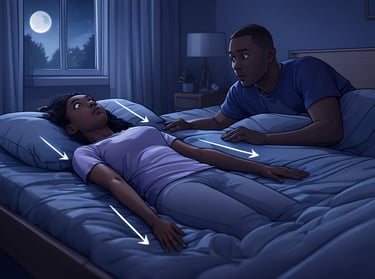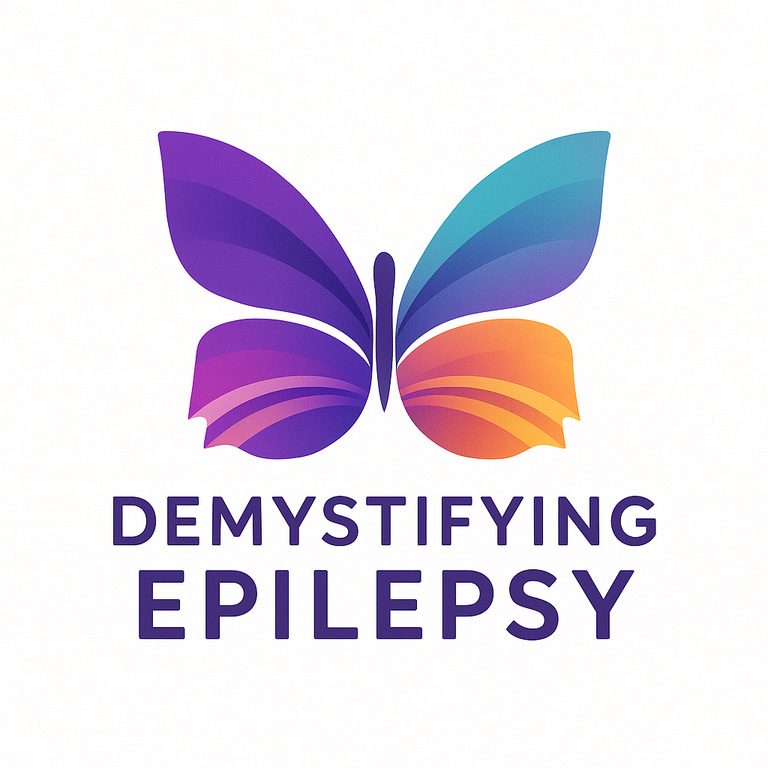Understanding Generalized Tonic Seizures
Generalized tonic seizures are a type of seizure that causes sudden muscle stiffening. They often happen during sleep and can lead to falls or “drop attacks.” This blog explains what they are, why they happen, how they’re diagnosed and treated following the story of Rudo, a courageous young woman navigating life with tonic seizures.
Dr. Clotilda Chinyanya
11/23/20254 min read


Rudo’s Story: Strength in the Stillness
Rudo was 17 when the first seizure happened. She had already drifted into a deep sleep after studying late. Suddenly, her body stiffened, her arms straightened and rigid, her legs locked, and her breath came out in a sharp grunt. Her mother woke to a heavy thud and rushed into the room.
Rudo lay on the floor, eyes wide and fixed, body tight like every muscle was fighting to hold its breath. It lasted only seconds but for her mother, it felt like a lifetime. When it was over, Rudo blinked rapidly, confused but awake. She didn’t remember falling. She didn’t remember anything at all.
Over the next weeks, the seizures continued, silent and sudden, stealing her balance without warning. She started wearing a helmet at home. She stopped riding the bus alone. Sleep no longer felt safe.
Doctors later diagnosed her with generalized tonic seizures, a form of epilepsy where the brain suddenly activates muscles on both sides of the body, causing a powerful, rigid stiffness. Understanding what was happening became the first step in taking back control. While some days still scare her, Rudo is not defined by epilepsy. She is determined, surrounded by a family who stands strong through every challenge. And she wants others to know that even when your body freezes, your life doesn’t have to.
Understanding Generalized Tonic Seizures
Generalized tonic seizures are caused by sudden and widespread activation of brain networks that control muscle tone.
What does “tonic” mean?
“Tone” refers to the natural tension in your muscles. During a tonic seizure, muscle tone shoots up abruptly causing the body to become stiff and rigid.
Key Features of Generalized Onset Tonic Seizures
Characterized by a sudden onset of strong, sustained stiffening of both sides of the body.
Arms and legs typically extend or tense sharply; eyes may widen or roll upward, and a grunt may occur from forced air leaving the lungs.
Duration is short, usually 5–60 seconds, with abrupt start and end.
Awareness is reduced or lost; autonomic changes (e.g., breathing changes) may be noticeable.
Can range from subtle (e.g., brief neck or eye stiffening) to severe full-body involvement causing falls (“drop attacks”), especially if standing.
Most commonly occurs during sleep or at night.
Frequently seen in severe childhood epilepsies, especially in children with developmental difficulties and multiple seizure types.
Lennox-Gastaut syndrome is the most strongly associated epilepsy syndrome.
EEG findings between and during seizures are often highly abnormal.
Prognosis is generally poor, and management is difficult, depending on the underlying epilepsy syndrome.
If rhythmic jerking follows the stiffening phase, the seizure is classified as a tonic-clonic seizure, which is distinct.
Some seizures may be subtle, only eye widening or neck stiffness, while others may cause a fall if standing. They are one of the seizure types that can cause "drop attacks."
What Causes these Seizures?
Generalized tonic seizures can affect anyone, but are most common in people with:
Lennox-Gastaut syndrome
Other severe childhood epilepsies
Developmental or intellectual impairments
Brain structure disorders or early neurological injury
They may also be linked to:
· Genetic causes: Epilepsy syndromes present in childhood
· Structural causes: Brain malformations, strokes, trauma
· Infectious causes: Meningitis, encephalitis
· Metabolic or immune disorders: abnormal electrolytes, autoimmune encephalitis
In some cases, like Rudo’s, doctors may not find a clear cause, but treatment can still help.
How Are They Diagnosed?
Diagnosis includes:
EEG (electroencephalogram)
Looks for abnormal brain activity
During tonic events → fast, low-amplitude activity seen across the brain
Between seizures → slowing or sharp-wave discharges may be present
MRI brain
Checks for structural causes
Seizure history or video recordings
Crucial to distinguish from other movement disorders
Sometimes clinicians evaluate during sleep because that’s when many tonic seizures occur.
How Can You Tell if It’s a Tonic Seizure?
Signs to watch for:
Sudden, intense muscle stiffening
No warning or slow buildup
Often causes a fall if standing
Brief duration
Reduced awareness
If stiffening looks uneven or always one-sided → doctors may check for focal seizures instead of generalized.
What Happens After the Seizure?
Recovery can vary:
Some people resume activity quickly
Others may be briefly tired or confused
Breathing changes or sweating may occur
No specific first aid needed unless there was a fall
Safety remains most important.
People who fall frequently may benefit from helmets or fall-proofing their environment.
What Makes Tonic Seizures Different?
Features:
Muscle stiffness
No jerking
Last a few seconds
High injury risk from falls
Treatment Options
Management can be challenging, especially in severe syndromes, but multiple strategies help:
Medications
Anti-seizure medicines are first-line. Treatment is individualized based on seizure type and epilepsy syndrome.
Other therapies
If medications are not enough:
Ketogenic diet
Vagus nerve stimulation
Responsive neurostimulation
Epilepsy surgery (when a focal cause is found)
Patients with persistent seizures are encouraged to see an epilepsy specialist or visit a dedicated epilepsy center.
Living With Tonic Seizures
Daily life adjustments can improve safety and confidence:
Night-time protection (padded bed edges, safe sleeping setup)
Avoid heights unless supervised
Use helmets if falls are common
Educate family and friends on what to expect
Keep a seizure diary to track patterns
Emotional support is just as important as medical care. Many people feel isolated or anxious, especially when seizures strike during rest.
Rudo’s Hope
Rudo has learned to protect herself:
Her bedroom has soft padding where needed
She uses a night-time seizure monitor
Her school counselor knows how to help
She takes medication that reduces seizure frequency
But most importantly, Rudo reminds herself daily that seizures are a part of her life, not her identity.
She shares her journey with others so they don’t feel alone in the dark. Her courage helps light the path for those experiencing the same fear she once did.
Key Takeaways
Generalized tonic seizures = sudden full-body stiffening
They are brief, often night-time, and may cause falls
Diagnosis uses EEG, MRI, and seizure history
Management requires medications and safety planning
Support networks help individuals maintain independence and hope
Final Thoughts
If you or someone you love experiences sudden stiffening episodes, especially during sleep, seek a medical evaluation early. The right diagnosis leads to the right treatment and a chance to regain control. Just like Rudo, every person with epilepsy deserves safety, dignity, and a full life.
Further Reading
Choose Knowledge:
